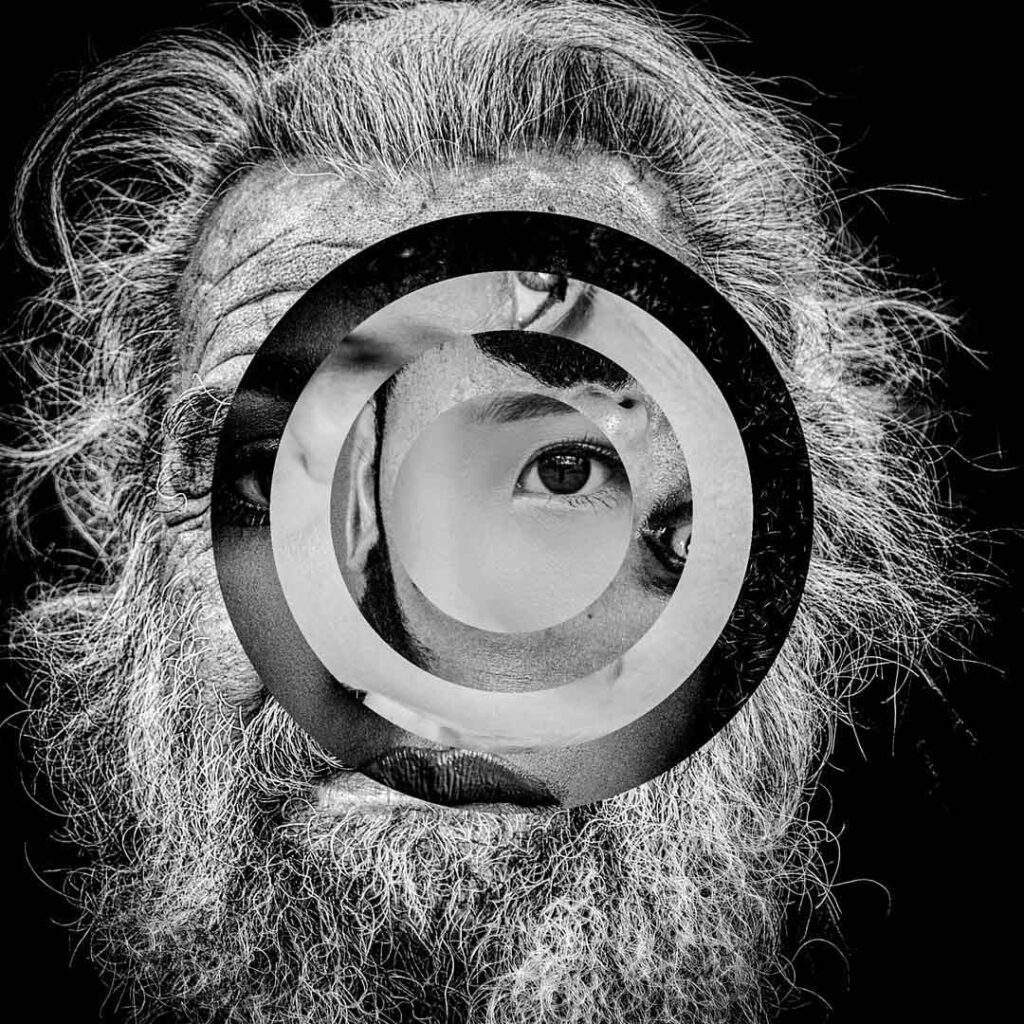Building on our earlier exploration of iconic self-portraits, where we deconstructed images using circles of varying sizes, this next phase takes the concept further by introducing rotation and layering. What began as an experiment in breaking away from the rigidity of grids evolved into a more dynamic relationship between the circular fragments and the canvas, leading us into new territory where abstraction meets familiarity.
This project revisits stock images as a foundation, using them as the basis for a series of abstracted portraits. We broke down each image into circular fragments-much like our previous work-but this time, we added a new layer of experimentation: rotation. Each circle was rotated by varying degrees and overlaid onto the original canvas, creating portraits composed of disjointed yet recognizable elements.
The effect is both striking and disorienting. As the circles overlap and rotate, the familiar features of the face are fractured and reassembled, challenging our perception of identity and form. Faces that once felt whole are now seen through a kaleidoscope of angles and fragments, where each rotation creates a subtle shift in the relationship between the features and the composition.
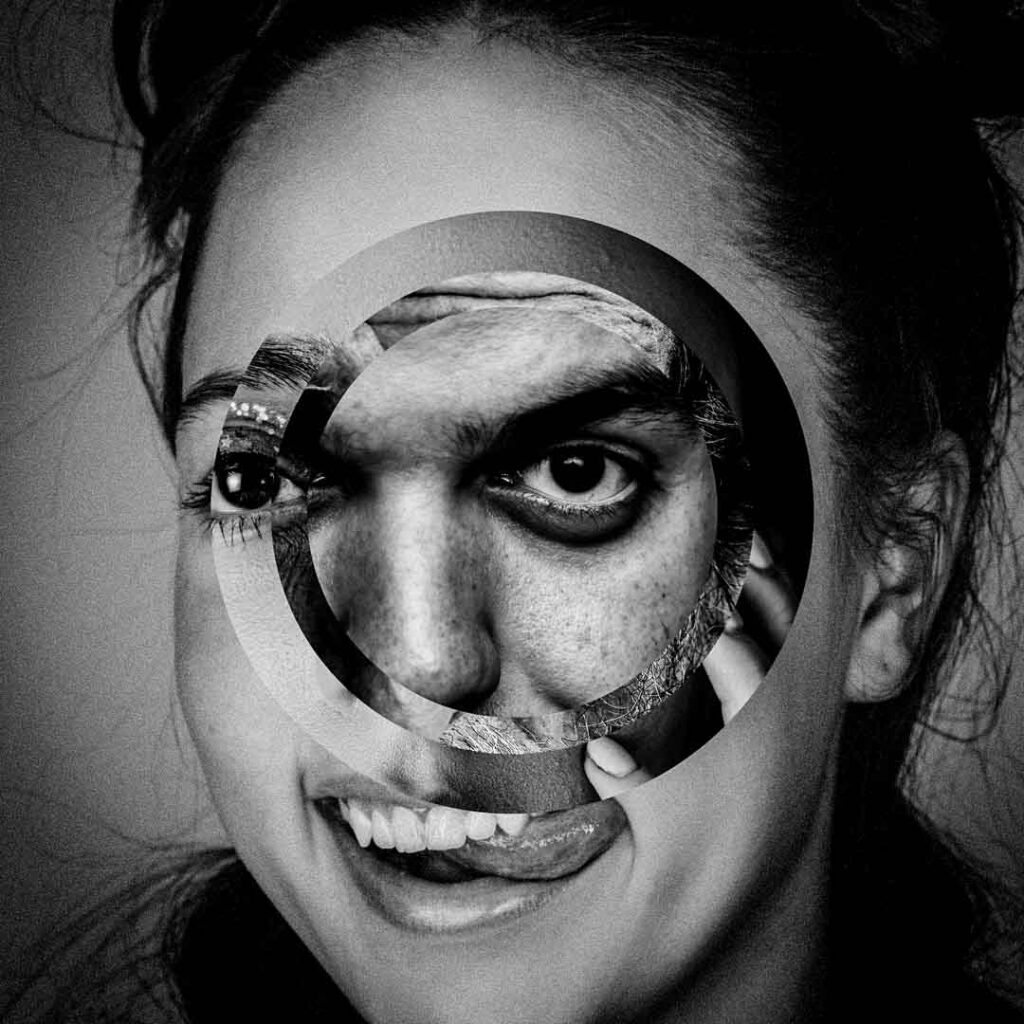
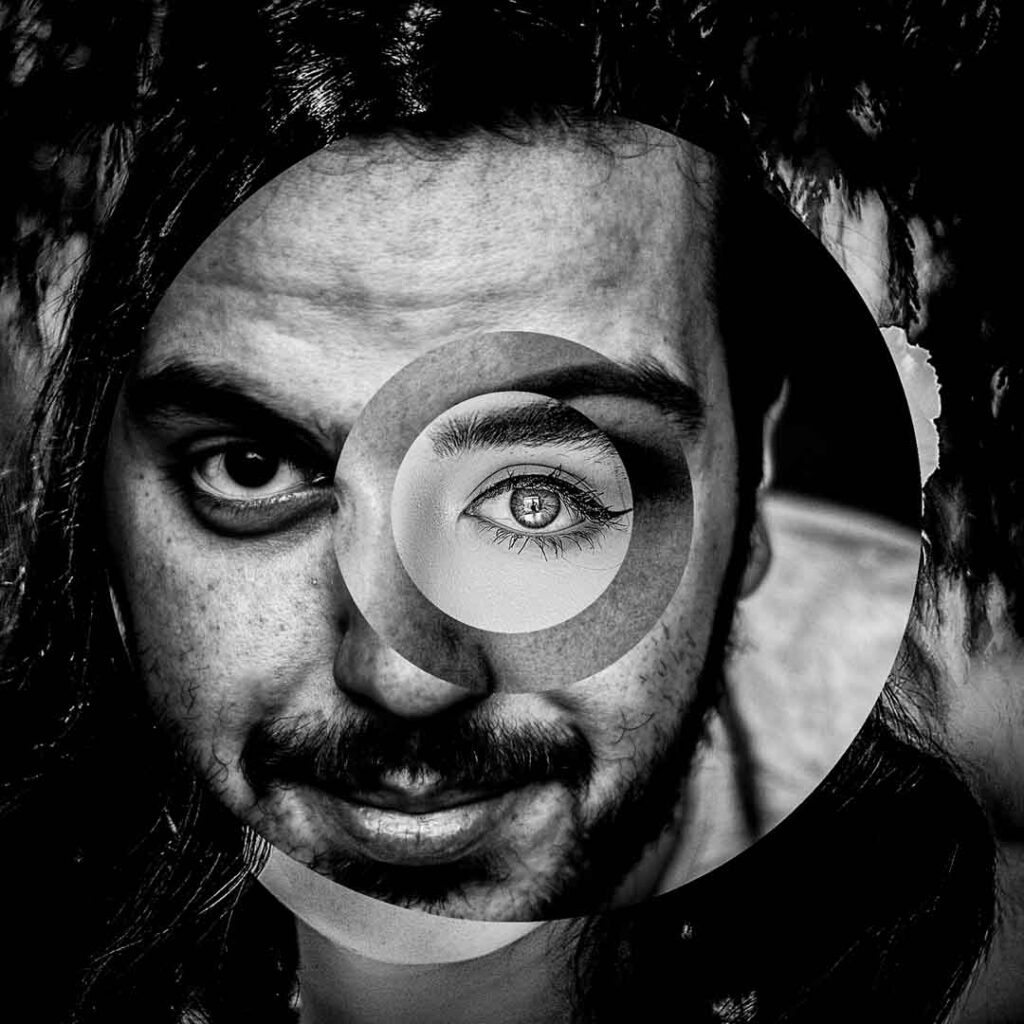
The circular deconstruction, coupled with the rotation, introduces a sense of fluidity and motion to otherwise static images. This process plays with the boundaries of recognition, pushing the viewer to engage with both the abstract shapes and the familiar patterns within them. Even though the faces are broken down and reassembled in unexpected ways, they still retain an uncanny sense of familiarity-reminding us that identity, much like these portraits, is always in flux.
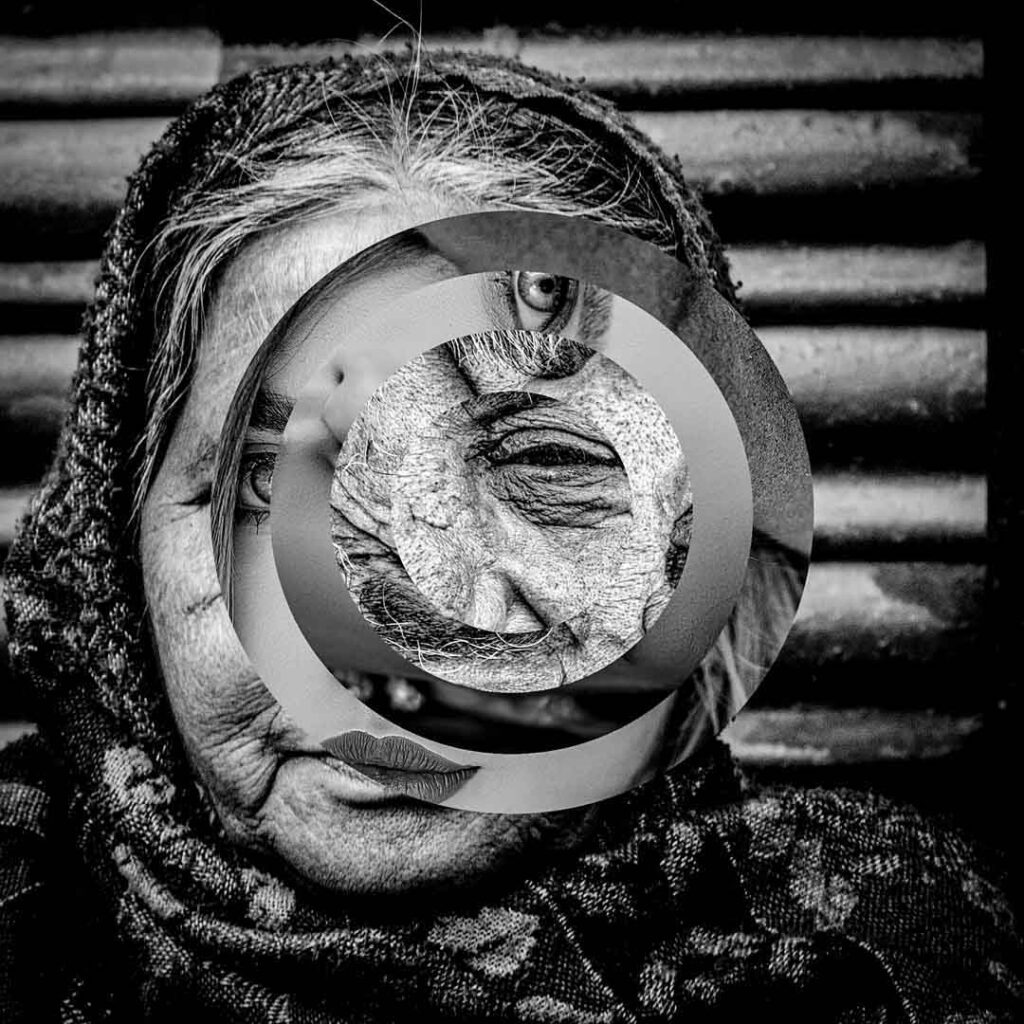
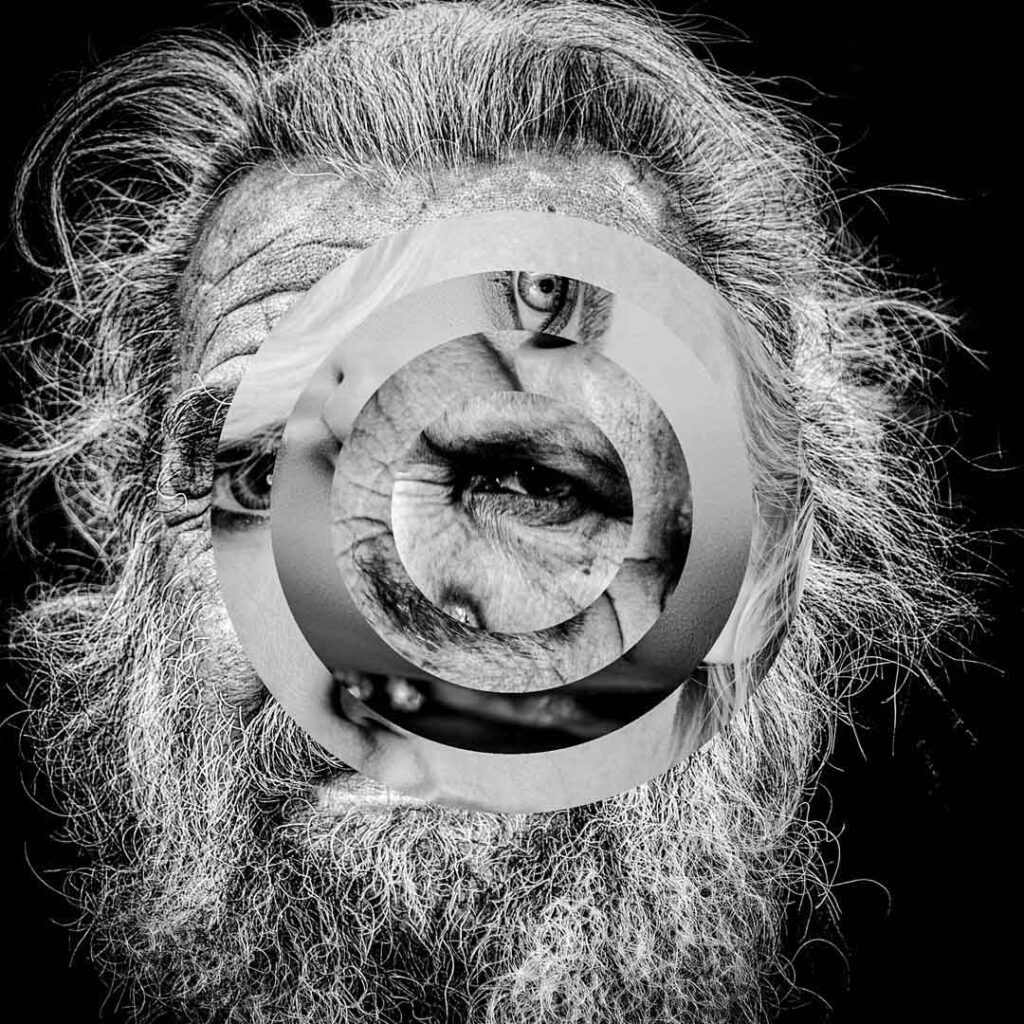
Through this project, we continue to explore the malleability of visual identity, using circular forms and rotational displacement to create a deeper interaction between abstraction and recognition.
